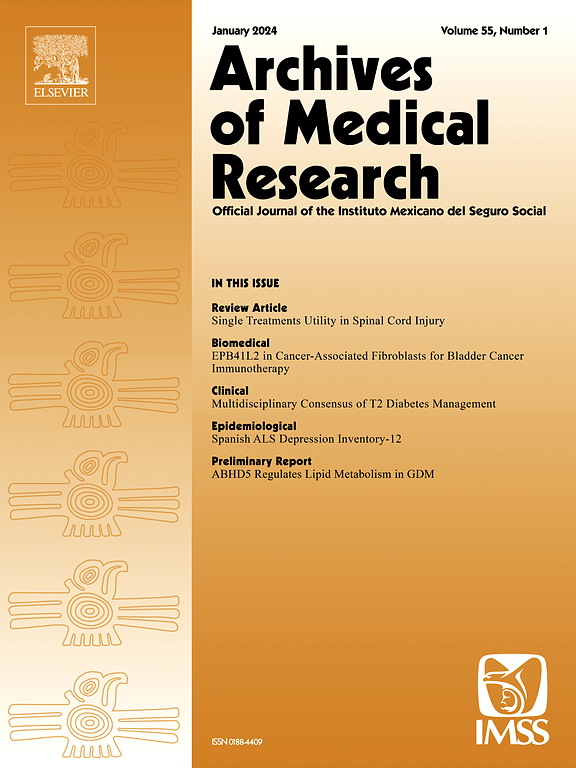墨西哥青少年和青壮年心血管疾病:2021年全球疾病负担研究的二次分析
IF 3.4
3区 医学
Q1 MEDICINE, RESEARCH & EXPERIMENTAL
引用次数: 0
摘要
背景和目的分析1990年和2021年墨西哥年轻心血管疾病(CVD)的负担,以及1990年至2021年的趋势,并评估其与社会人口指数(SDI)和医疗保健获得性和质量指数(HAQI)的关联。指标包括死亡率、损失寿命年数(YLL)、残疾寿命年数(YLD)和残疾调整寿命年数(DALY)。结果男性年轻心血管疾病的年龄标准化残疾调整寿命年数率有所上升,而女性则有所下降。年轻心血管疾病死亡的主要原因是缺血性心脏病和中风。除风湿性心脏病和肺动脉高压外,男性在所有心血管疾病病因中的负担都较高。男性过早死亡的负担较重,而女性的残疾情况则更为明显。SDI、HAQI和心血管疾病负担之间存在复杂的关联,凸显了墨西哥各州之间的不同情况。结论认识到年轻男性和女性独特的心血管疾病特征,并让他们有效地参与到医疗保健系统中,可能会导致有针对性的干预措施,从而减少风险因素,改善健康状况,并进一步减轻墨西哥年轻患者的心血管疾病负担。本文章由计算机程序翻译,如有差异,请以英文原文为准。
Cardiovascular disease in adolescents and young adults in Mexico: Secondary analysis of the 2021 global burden of disease study
Background and Aims
To analyse the burden of young-onset cardiovascular disease (CVD) in Mexico for the years 1990 and 2021, as well as trends from 1990 to 2021, and to evaluate its association with the sociodemographic index (SDI) and the Healthcare Access and Quality Index (HAQI).
Methods
A secondary analysis of data from the Global Burden of Disease (GBD) study was conducted, stratified by sex, age groups, states, and CVD subcauses. Metrics included mortality, years of life lost (YLL), years lived with disability (YLD), and disability-adjusted life years (DALY).
Results
There was an increase in age-standardized young-onset CVD DALY rates in men and a decrease in women. The leading causes of young-onset CVD deaths were ischemic heart disease, and stroke. Males showed a higher burden for all CVD causes, except for rheumatic heart disease and pulmonary arterial hypertension. The burden of premature mortality was higher in men, while disability was more pronounced in women. Complex associations were observed between SDI, HAQI, and CVD burden, highlighting a heterogeneous situation among Mexican states.
Conclusions
Recognizing the unique cardiovascular profiles of young men and women and effectively engaging them in healthcare systems may lead to targeted interventions that reduce risk factors, improve health outcomes, and further decrease the burden of young-onset CVD in Mexico.
求助全文
通过发布文献求助,成功后即可免费获取论文全文。
去求助
来源期刊

Archives of Medical Research
医学-医学:研究与实验
CiteScore
12.50
自引率
0.00%
发文量
84
审稿时长
28 days
期刊介绍:
Archives of Medical Research serves as a platform for publishing original peer-reviewed medical research, aiming to bridge gaps created by medical specialization. The journal covers three main categories - biomedical, clinical, and epidemiological contributions, along with review articles and preliminary communications. With an international scope, it presents the study of diseases from diverse perspectives, offering the medical community original investigations ranging from molecular biology to clinical epidemiology in a single publication.
 求助内容:
求助内容: 应助结果提醒方式:
应助结果提醒方式:


